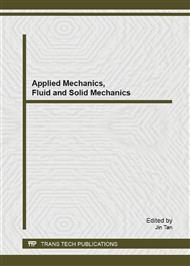p.3
p.9
p.15
p.21
p.27
p.32
p.39
p.45
Modified Building Shapes for Reducing Vibrations of Tall Building
Abstract:
To investigate the aerodynamic method for reducing motion induced vortex excitation as well as the galloping and torsional flutter of a tall building, We conducted wind tunnel tests on a tall building having a rectangular cross-section with a side ratio, D/B of 4.0 and aspect ratio of 10.0. Three aeroelastic building models were constructed to assess the effect of modified building shapes on the reduction of these vibrations. One is a plain model and the others are the shape-modified versions of the plain model, in which one has chamfered corners and the other has two openings at the top level. Experimental results showed that the chamfered model was more effective than model with the opening in reducing the above-mentioned types of vibrations, especially in motion induced vortex excitation, but not in reducing torsional vibration when the reduced velocity is high. Increasing the damping ratio might not be effective in reducing the bending and torsional vibrations of both the chamfered model and the model with openings when the reduced velocity is high.
Info:
Periodical:
Pages:
3-8
Citation:
Online since:
December 2013
Authors:
Keywords:
Price:
Сopyright:
© 2014 Trans Tech Publications Ltd. All Rights Reserved
Share:
Citation:


